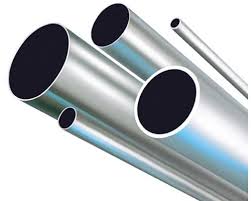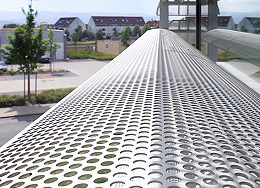
Thống kê
| 1882835 | |
| Số người đang online | 1 |
| Số truy cập hôm nay | 246 |
| Số truy cập tháng này | 57976 |
Quảng cáo
Ferritic stainless steel

|
Ferritic steels have high chromium content, magnetic stainless steel with low carbon content. Known for their good ductility, resistance to corrosion and stress corrosion cracking, ferritic steels commonly used in automotive applications, kitchenware and industrial equipment.
Compared with austenitic stainless steel, which has a cubic (FCC) structure present county center, ferritic steel is determined by a cubic (BCC) structure body centered county. In other words, the crystal structure of steel such as including an atomic cell block with a central atom.
Ferritic steels can not be hardened or strengthened by heat treatment, but have good resistance to stress corrosion cracking. They can be made lanhc and softened by annealing.
Though not as strong or as corrosion resistant austenitic, ferritic grades often have better technical characteristics. Generally is to solder, some ferritic steels may be susceptible to heat-sensitive area affected by the welds and weld metal hot cracking. Restrictions weldability.
Because chromium and nickel lower levels, ferritic steel grade standard is typically less expensive than their austenitic. Content can range from 10.5 to 27 Chromium percent, and similar martensitic grades, generally little or no nickel. Special class typically include molybdenum, and in a lesser extent, aluminum and titanium used.
Ferritic stainless steel alloy can generally be classified in five groups, three standard classes (groups 1-3 below) and two specialized classes (groups 4 and 5 below).
Group 1 (type 409 / 410L): It has the lowest chromium content of all stainless steels and is ideal for mildly corrosive environments where rust is acceptable locally. The least expensive of all types of stainless steel, type 409 was originally created for automotive exhaust system silencer, but now can be found in automobile exhaust and catalytic converter casing . Type 410L is often used for containers, buses and chassis LCD monitors.
Group 2 (type 430): The most commonly used ferritic steel, type 430 has a higher chromium content and, therefore, resistant to corrosion by nitric acid, sulfur and many organic acids and food. In some applications, this class can be used as an alternative to austenitic grade 430 304. type usually found in the interior equipment including drum washing machines, kitchen sinks, cutlery, Indoor table, dishwasher and other cooking utensils.
Group 3 (types 430Ti, 439 and 441): Capable of welding and shaping better than group 2, group 3 steel can be used to replace austenitic type 304 in a wider range of applications , including the tub, tube exchanger, exhaust systems and welding parts of a washing machine.
Group 4 (Class 434, 436, 444): With a high molybdenum content, ferritic stainless steels have enhanced corrosion resistance and are used in the hot water tank, hot water solar, the exhaust system parts, electric kettle, microwave elements, as well as automobile trip. Class 444, in particular, have an equivalent resistance pitting (PRE) layer 316, allowing it to be used in outdoor environments corrosion over
Group 5 (446, 445, 447): This special group of stainless steel is characterized by relatively high levels of chromium. The result is steel with excellent corrosion and scaling (oxidation). In fact, corrosion resistance of the layer 447 is equivalent to the titanium metal. Molybdenum is also often added to improve corrosion resistance. Applications for steel group 5 are found in the coastal environment and offshore corrosion.
|
Liên kết website
Hỗ trợ trực tuyến
-
 Liên hệ ngay.Email:ĐT: (08) 6682 3335 - Fax: (08) 6256 2218
Liên hệ ngay.Email:ĐT: (08) 6682 3335 - Fax: (08) 6256 2218
Ngày giờ hiện tại
13/9/2025
clock




